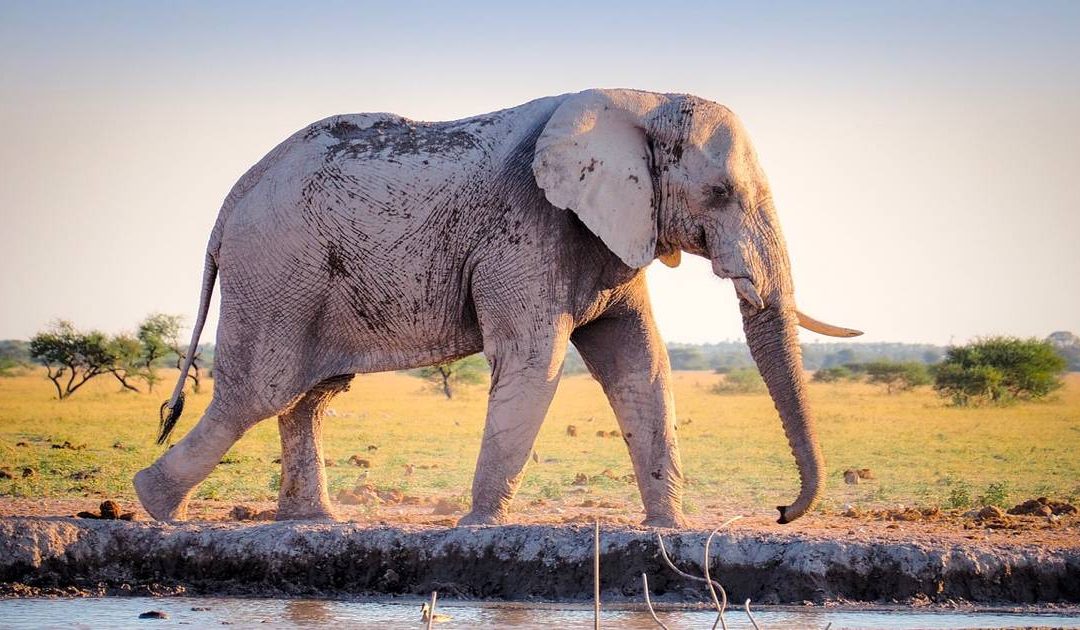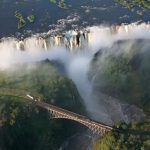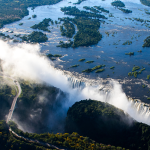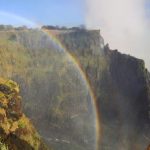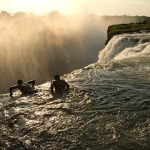You’re standing on the edge of Zimbabwe, with the awe-inspiring Victoria Falls roaring in front of you. As the mist settles on your skin, you can’t help but wonder about the incredible wildlife that calls this place home. From elephants playfully bathing in the Zambezi River to stealthy leopards gracefully treading through the lush vegetation, the wildlife of Victoria Falls paints a mesmerizing picture of nature’s diversity and beauty. Embark on a journey into the heart of this natural wonder, where the untamed creatures steal the show and remind you of the magical wonders that exist beyond human civilization.
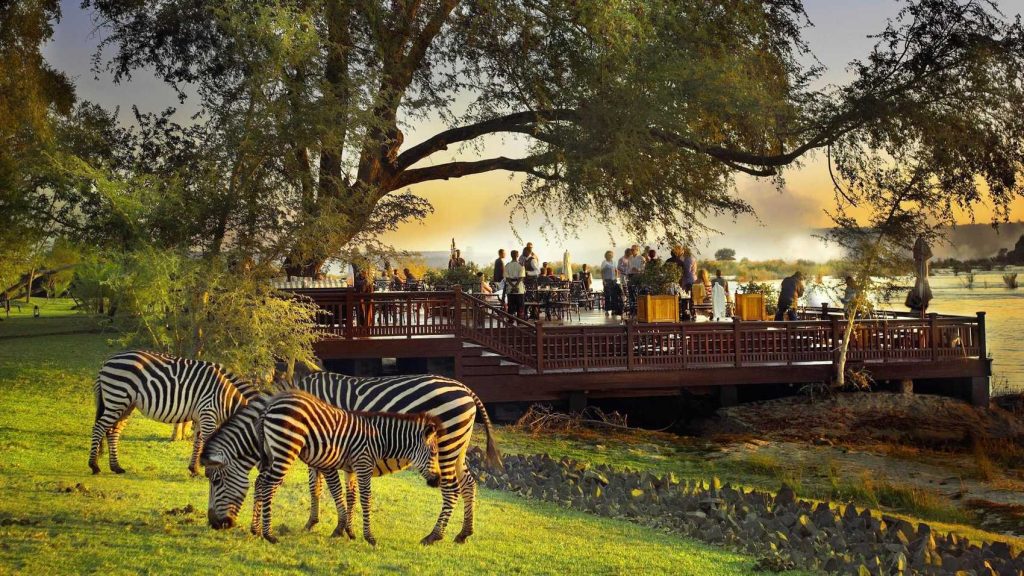
1. Mammals
Victoria Falls is home to a diverse array of mammal species, each with its own unique characteristics and behaviors. Let’s take a closer look at some of the prominent mammal species found in this region:
1.1 Elephants
One of the most iconic animals found in Victoria Falls is the African elephant. These majestic creatures wander freely in the surrounding wilderness, often creating stunning sights as they traverse the grasslands. With their massive size and impressive tusks, elephants are a truly awe-inspiring sight, and encountering a herd of these gentle giants is an experience you won’t soon forget.
1.2 Lions
Known as the kings of the savannah, lions can be found in the grasslands surrounding Victoria Falls. These magnificent big cats are known for their power and grace, as well as their majestic manes. Observing a pride of lions going about their daily routines, from hunting to interacting within the group, is a captivating experience and a testament to the true beauty of African wildlife.
1.3 Buffalos
The African buffalo, also known as the Cape buffalo, is an impressive and formidable mammal that inhabits the Victoria Falls area. These large herbivores move in herds and can often be spotted grazing peacefully on the grassy plains. Despite their passive appearance, buffalos are known for their protective nature, and encountering them up close can be an exhilarating and humbling experience.
1.4 Zebras
With their distinctive black and white stripes, zebras are some of the most easily recognizable animals in the world. These social animals can be found roaming the grasslands near Victoria Falls, usually in large herds. Observing their unique behavior, from grooming one another to engaging in playful interactions, provides a fascinating insight into the intricate social dynamics of these beautiful creatures.
1.5 Giraffes
The majestic giraffe, with its towering height and elegant movements, is another iconic mammal species found in the Victoria Falls region. These herbivores are known for their long necks and unique spotted patterns, which allow them to feed on leaves from tall trees. Witnessing these magnificent animals gracefully strolling across the plains is a sight that will leave you in awe of nature’s creation.
1.6 Hippos
Victoria Falls is also home to a significant population of hippos, which can often be seen wallowing in the Zambezi River. Despite their somewhat comical appearance, hippos are among the most dangerous animals in Africa. Observing them from a safe distance gives you a glimpse into their semi-aquatic lifestyle and allows you to appreciate their vital role in the ecosystem.
1.7 Rhinoceros
The white rhinoceros, one of the iconic members of the African Big Five, can be found in the Victoria Falls region. With their massive size and distinctive horn, these herbivores play a crucial role in the local ecosystem. Unfortunately, they are also critically endangered due to poaching activities. Witnessing these magnificent creatures in their natural habitat serves as a reminder of the importance of conservation efforts.
1.8 Warthogs
Instantly recognizable by their distinctive tusks and warty facial features, warthogs are a common sight in the Victoria Falls area. These wild pigs are well-adapted to their environment, with their ability to dig for food and seek refuge in burrows. Observing their unique behaviors, such as wallowing in mud to keep cool during hot days, is a truly delightful experience.
1.9 Antelopes
Victoria Falls is home to a diverse range of antelope species, each with its own unique characteristics. From the graceful impalas to the stately sables, encountering these magnificent creatures in their natural habitat is a true delight. The sight of antelopes leaping gracefully across the plains is a testament to the beauty and agility of these animals.
1.10 Baboons
As you explore the Victoria Falls region, you’re likely to encounter troops of baboons going about their daily activities. These intelligent and resourceful primates are known for their hierarchical social structures and distinctive vocalizations. Observing their interactions, from grooming rituals to their mischievous antics, offers a fascinating glimpse into the world of primates.
2. Birds
Victoria Falls boasts an incredible diversity of bird species, attracting birdwatchers from all over the world. Let’s explore some of the stunning avian species that call this region their home:
2.1 Eagles
Eagles, with their majestic flight and keen eyesight, are a common sight in the Victoria Falls area. Species such as the fish eagle and the martial eagle can often be seen soaring through the skies, searching for prey. Witnessing the aerial prowess of these birds of prey is a thrilling experience that highlights the beauty and power of nature.
2.2 Vultures
The Zambezi Valley provides an ideal habitat for various vulture species, including the African white-backed vulture and the hooded vulture. These scavengers play a vital role in the ecosystem, keeping it clean by feeding on carrion. Spotting these large birds circling the skies and congregating around feeding sites is a unique and raw spectacle.
2.3 Kingfishers
Kingfishers are a group of small to medium-sized birds known for their vibrant plumage and remarkable fishing skills. Victoria Falls is home to several species of kingfishers, including the Malachite kingfisher and the pied kingfisher. Observing these colorful birds as they dive into the water to catch fish is a testament to their remarkable agility and adaptability.
2.4 Hornbills
Hornbills, with their unique bills and distinct calls, are a common sight in the Victoria Falls region. Species such as the African grey hornbill and the Southern yellow-billed hornbill showcase stunning displays of their aerial acrobatics. These birds play an important role in dispersing seeds and maintaining the balance of the local ecosystem.
2.5 Storks
Victoria Falls provides a suitable habitat for various stork species, including the African openbill and the marabou stork. These large, elegant birds can often be seen walking gracefully in the shallows, foraging for food. Their distinctive appearance and serene movements offer a serene and tranquil experience in the midst of nature’s grandeur.
2.6 Pelicans
Pelicans, with their large beaks and distinctive pouches, are a fascinating sight to behold. Species such as the great white pelican and the pink-backed pelican can be found in the Victoria Falls area. Witnessing these birds skillfully scooping fish from the water and swallowing them whole is a captivating display of nature’s adaptive evolution.
2.7 Herons
Herons, known for their long legs and graceful stature, are a common sight along the waterways of Victoria Falls. Species such as the grey heron and the black-headed heron can often be observed patiently stalking their prey in shallow waters. Their stealthy movements and patient hunting strategies provide a captivating glimpse into their fascinating lives.
2.8 Bee-eaters
Bee-eaters, with their vibrant plumage and aerial hunting skills, are a joy to observe in the Victoria Falls region. Species such as the Southern carmine bee-eater and the European bee-eater demonstrate remarkable agility as they swoop through the air, catching bees and other flying insects. Their colorful presence adds a splash of vibrancy to the already stunning natural landscape.
2.9 Fish eagles
The African fish eagle, with its striking appearance and distinctive call, is an iconic bird of prey found in the Victoria Falls area. Known for its excellent fishing prowess, this species can often be seen perched high on trees near rivers and lakes, scanning the waters for potential prey. The sight of a fish eagle swooping down to catch a fish in mid-flight is a sight that will leave you in awe.
2.10 Flamingos
While not a permanent resident, flamingos occasionally visit the Victoria Falls area, particularly during the wet season. These captivating birds gather in large flocks, painting the landscape with their vibrant pink hues. Witnessing the spectacle of hundreds of flamingos congregating and engaging in synchronized movements is a sight that will stay etched in your memory forever.
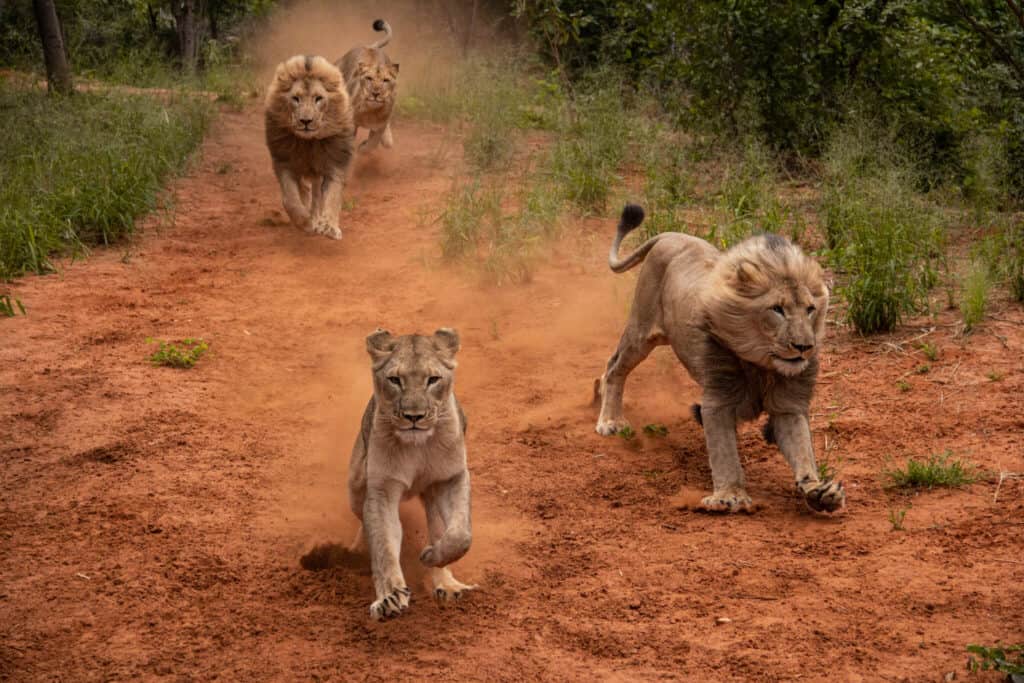
3. Reptiles
Reptiles form an important part of the ecosystem in Victoria Falls, playing crucial roles across various habitats. Here are some of the fascinating reptile species you may encounter in this region:
3.1 Crocodiles
Victoria Falls is home to both the Nile crocodile and the elusive slender-snouted crocodile. These apex predators can often be found basking on riverbanks or lurking beneath the water’s surface, waiting to ambush unsuspecting prey. Observing their prehistoric appearance and witnessing their incredible hunting techniques adds an element of excitement and rawness to the wildlife experience.
3.2 Monitor lizards
Monitor lizards, with their elongated bodies and forked tongues, are some of the largest reptiles found in the Victoria Falls area. Species such as the Nile monitor and the water monitor can be spotted in and around waterways. With their keen senses and impressive climbing abilities, monitor lizards are masterful predators in their own right.
3.3 Chameleons
Chameleons are well-known for their ability to change color, adapting to their surroundings in a matter of seconds. Victoria Falls is home to several species, including the flap-necked chameleon and the helmeted chameleon. These fascinating creatures stalk their prey with precision and provide a mesmerizing display of their unique characteristics when observed up close.
3.4 Tortoises
Several species of tortoises, such as the leopard tortoise and the hinged tortoise, can be found in the Victoria Falls area. These slow-moving reptiles are known for their sturdy shells and herbivorous diets. Spotting a tortoise ambling through the grasslands is a reminder of the resilience and adaptability of these marvelous creatures.
3.5 Snakes
Victoria Falls is home to a variety of snake species, both venomous and non-venomous. Venomous snakes such as the black mamba and the puff adder can be found in this region, making caution necessary when exploring the wilderness. However, it’s important to remember that snakes play a crucial role in maintaining the balance of the ecosystem, and observing them from a safe distance can be an enlightening experience.
3.6 Geckos
Geckos are small reptiles with remarkable adaptations that allow them to climb vertical surfaces and camouflage themselves exceptionally well. Several gecko species, including the tokay gecko and the African fat-tailed gecko, thrive in the Victoria Falls region. Observing these agile creatures as they scurry across walls and trees is a testament to their impressive agility and survival skills.
3.7 Terrapins
Terrapins, also known as freshwater turtles, can be found in the Zambezi River and other water bodies near Victoria Falls. Species such as the serrated hinged terrapin and the marsh terrapin often bask in the sun on riverbanks. Their slow, deliberate movements and intricate shell patterns make them an interesting sight for wildlife enthusiasts.
3.8 Skinks
Skinks, with their smooth scales and elongated bodies, are a common sight in the Victoria Falls area. Species such as the rainbow skink and the giant girdled lizard can be found in this region. These reptiles are well-adapted to their environments, showcasing impressive camouflage and agility in their daily activities.
3.9 Nile monitors
The Nile monitor, one of Africa’s largest lizards, can be spotted near water sources in the Victoria Falls region. With their immense size and powerful jaws, Nile monitors are formidable predators. Observing these reptiles from a safe distance provides a glimpse into their complex behaviors and adaptations.
3.10 Agamas
Agamas, colorful lizards known for their impressive displays, can be found in the Victoria Falls area. Species such as the southern rock agama and the mopane agama are commonly encountered. Males of these species often exhibit vibrant colors during mating displays, adding a touch of beauty to the natural landscape.
4. Fish
The waterways of Victoria Falls are teeming with a wide variety of fish species, each playing a crucial role in the aquatic ecosystem. Here are some notable fish species you may encounter:
4.1 Tigerfish
The tigerfish, known for its powerful jaws and razor-sharp teeth, is a popular game fish found in the Zambezi River. Anglers flock to this region in pursuit of the thrilling challenge offered by these ferocious predators. Catching a tigerfish is not only exciting but also provides an opportunity to appreciate the strength and beauty of this iconic fish species.
4.2 Bream
Bream, also known as tilapia, are a group of fish species commonly found in the waters surrounding Victoria Falls. These tasty freshwater fish are a popular target for local fishermen. Whether enjoyed as a meal or pursued as a recreational activity, fishing for bream provides a memorable experience in the tranquil waters of Victoria Falls.
4.3 Catfish
Catfish are known for their distinctive barbels, which resemble the whiskers of a cat. The Zambezi River is home to several catfish species, including the African sharptooth catfish and the vundu catfish. These bottom-dwelling scavengers play a vital role in maintaining water quality by feeding on decaying organic matter.
4.4 Tilapia
Tilapia, a popular freshwater fish worldwide, can be found in abundance in the waters surrounding Victoria Falls. They are known for their adaptability to various habitats and their delicious taste. Whether you’re a fishing enthusiast or simply appreciating the diversity of aquatic life, encountering tilapia adds to the vibrant tapestry of Victoria Falls’ ecosystem.
4.5 Lungfish
Known for their unique ability to breathe air, lungfish are evolutionary marvels found in the Zambezi River. These ancient fish species have adapted to survive in both water and mud during dry spells. With their fascinating behaviors and remarkable respiratory adaptations, lungfish provide a glimpse into the wonders of our planet’s natural history.
4.6 Barbels
Barbels, a group of fish known for their whisker-like appendages, are a common sight in the waters surrounding Victoria Falls. Species such as the slender barbels and the Threespot barbels can be found in this region. Their bottom-feeding habits and specialized sensory organs make them an integral part of the aquatic ecosystem.
4.7 Mormyrids
Mormyrids, commonly referred to as elephantfish, are a group of freshwater fish found in the Zambezi River system. These fish are known for their unique electrical sensing abilities, which they use for navigation and communication. Observing mormyrids in their natural habitat offers a fascinating insight into the incredible adaptations that have evolved in response to their environment.
4.8 Electric catfish
Electric catfish, with their ability to generate electric shocks, are a captivating species found in the waters near Victoria Falls. These shocks are primarily used for navigation and communication. Witnessing the remarkable abilities of electric catfish is a reminder of the astonishing diversity and complexity of aquatic life.
4.9 Goby
Gobies, small fish adapted to various aquatic environments, can be found in the waters surrounding Victoria Falls. These fish are known for their vibrant colors and diverse range of behavioral adaptations. From burrowing in sand to changing their skin patterns, gobies showcase a remarkable ability to thrive in challenging environments.
4.10 Cichlids
Cichlids, a family of colorful and diverse fish, inhabit the freshwater systems around Victoria Falls. Species such as the Mozambique tilapia and the zebra cichlid can be found in this region. The vibrant colors and intricate behaviors displayed by cichlids make them a fascinating sight for both professional researchers and casual observers.
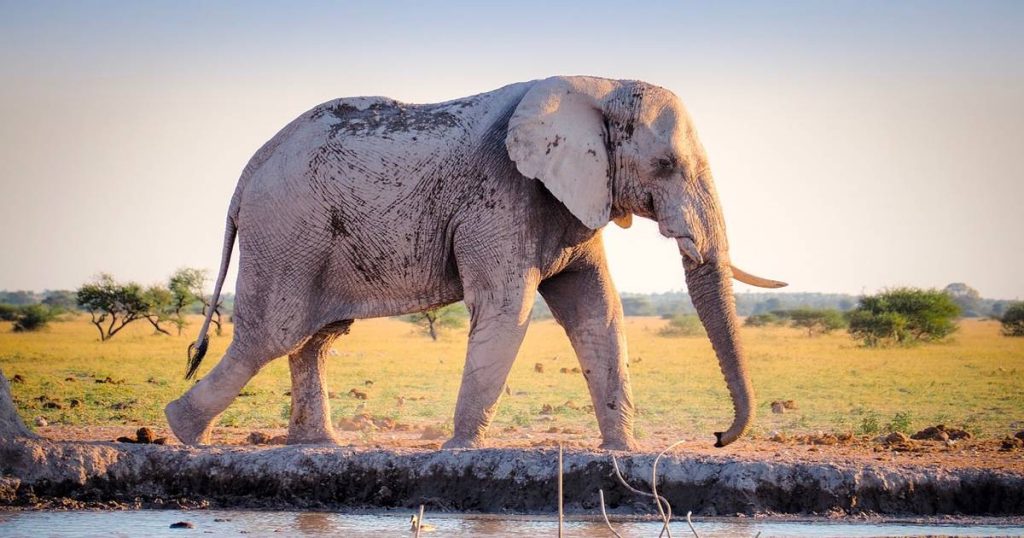
5. Insects
Insects form the backbone of many ecosystems, playing vital roles in pollination, decomposition, and nutrient cycling. Victoria Falls is home to a rich diversity of insect species, each with its own unique characteristics and importance. Here are some notable insect groups you might encounter:
5.1 Butterflies
Butterflies are universally beloved for their stunning colors and delicate flight patterns. Victoria Falls is home to a wide variety of butterfly species, including the African monarch and the Citrus swallowtail. Observing these beautiful insects flitting from flower to flower is not only visually pleasing but also serves as a reminder of the intricate relationship between insects and plants.
5.2 Bees
Bees are some of the most crucial insects in any ecosystem, responsible for pollinating countless plant species. In Victoria Falls, various bee species, including the African honeybee and the stingless damselfly, thrive thanks to the abundance of flowering plants. Witnessing bees going about their important work, transferring pollen from one flower to another, enhances one’s appreciation for these industrious creatures.
5.3 Dragonflies
Dragonflies, with their iridescent wings and agile flight, are a common sight near water sources in Victoria Falls. These predatory insects showcase exceptional flying skills as they hunt down smaller insects in mid-air. With their intricate eye patterns and vibrant colors, dragonflies add a touch of beauty to the natural landscape.
5.4 Beetles
Beetles, with their hard exoskeletons and diverse forms, are the most numerous group of insects found in Victoria Falls. Species such as the dung beetle and the rhinoceros beetle play important roles in recycling organic matter and aiding in nutrient cycling. Observing the various shapes and sizes of beetles provides a fascinating insight into the vast array of insect life.
5.5 Ants
Ants are among the most abundant and ecologically significant insects found in Victoria Falls. These social insects form complex colonies, with each individual having specific roles. From foraging and nest building to defending against intruders, ants exhibit remarkable teamwork and cooperation. Observing their intricate behaviors can be both captivating and educational.
5.6 Mosquitoes
Mosquitoes, although infamous for their nuisance and disease transmission, serve as important food sources for numerous animals in Victoria Falls. These insects play a role in the pollination of certain plants and serve as prey for birds, bats, and other insects. While taking precautions to prevent mosquito bites, observing their presence in the ecosystem can offer a deeper understanding of the intricate web of life.
5.7 Grasshoppers
Grasshoppers are known for their ability to produce chirping sounds and their impressive jumping abilities. Various grasshopper species, such as the Eastern lubber grasshopper and the painted grasshopper, can be found in Victoria Falls. These herbivorous insects contribute to nutrient cycling and are an important food source for many predators in the region.
5.8 Termites
Termites, known for their ability to build complex and intricate structures, are essential ecosystem engineers in Victoria Falls. These social insects construct towering mounds that serve as ventilation systems and regulate temperature and humidity. Witnessing the architectural marvels created by termites provides a unique appreciation for the hidden world beneath our feet.
5.9 Moths
Moths, often overshadowed by their daytime counterparts, the butterflies, are equally fascinating creatures. Victoria Falls is home to a variety of moth species, including the African moon moth and the ghost moth. These nocturnal insects showcase an array of colors and patterns, many of which are designed to camouflage them in their natural habitats.
5.10 Praying mantises
Praying mantises, with their upright posture and incredible mimicry abilities, are an intriguing group of insects found in Victoria Falls. These ambush predators have evolved various camouflage techniques to blend seamlessly with their surroundings. Spotting a praying mantis and observing its patient and calculated movements is a testament to the wonders of natural selection.
6. Amphibians
Amphibians, with their ability to inhabit both land and water, add an important dimension to the biodiversity of Victoria Falls. Here are some notable amphibian species you may encounter:
6.1 Frogs
Frogs are a diverse group of amphibians known for their unique life cycles and vocalizations. In Victoria Falls, several frog species, including the African clawed frog and the painted reed frog, inhabit the wetland areas. During the rainy season, the chorus of frog calls fills the air, creating a symphony of sounds that is unmistakably characteristic of the African wilderness.
6.2 Toads
Toads, close relatives of frogs, can also be found in the Victoria Falls region. These robust and often warty amphibians are typically found in moist habitats. Species such as the guttural toad and the tree toad are known for their distinctive appearances and unique behaviors. Encountering a toad on a quiet evening walk is a reminder of the hidden wonders that surround us.
6.3 Salamanders
While not as diverse as frogs and toads, salamanders can still be found in some wetland areas near Victoria Falls. These secretive amphibians usually inhabit moist environments such as marshes and streams. Observing their delicate movements and taking note of their intricate patterns provides an appreciation for the delicate balance of nature.
6.4 Newts
Newts, small-bodied amphibians with lizard-like appearances, are often found in water bodies surrounding Victoria Falls. These charismatic creatures are known for their bright coloration and their unique ability to regenerate lost limbs. Spotting a newt in its aquatic environment gives a glimpse into the fascinating world of these often-overlooked amphibians.
6.5 Caecilians
Caecilians, legless amphibians that resemble earthworms or snakes, can be found in the tropical rainforests near Victoria Falls. These elusive creatures are often difficult to spot due to their subterranean lifestyle. However, their important ecological roles as decomposers and indicators of habitat health should not be overlooked.
6.6 Tree frogs
Tree frogs, with their adhesive toe pads and arboreal habits, are fascinating amphibians found in the Victoria Falls region. Species such as the African tree frog and the foam-nest tree frog can be encountered in the lush rainforest areas. Witnessing a tree frog delicately clinging to the underside of a leaf is a testament to their remarkable adaptations.
6.7 Clawed frogs
Clawed frogs, named for their unique claws, are a group of amphibians found in and around water sources near Victoria Falls. These frogs are adapted to living in both aquatic and terrestrial environments. Witnessing a clawed frog gracefully swimming or using its specialized claws to dig burrows offers a glimpse into the versatility of these fascinating creatures.
6.8 Torrent frogs
Torrent frogs, also known as river frogs, are amphibians found in fast-flowing streams and cascades near Victoria Falls. These unique frogs have adapted to living in a turbulent water environment and are known for their strong limbs and suction cup-like toe pads. Encountering a torrent frog in its element demonstrates the resilience and adaptability of life.
6.9 African river frogs
African river frogs, as the name suggests, can be found in the waterways surrounding Victoria Falls. These frogs are adapted to live in flowing water and are known for their streamlined bodies and powerful hind limbs. Observing these agile frogs navigating the currents offers a thrilling glimpse into the remarkable adaptations of amphibians.
6.10 Pyxicephalus adspersus
Pyxicephalus adspersus, more commonly known as the African bullfrog or the giant bullfrog, is a large and robust amphibian found in Victoria Falls. These frogs are famous for their deep booming calls, which can be heard during the rainy season. Their immense size and unique vocalizations make them a truly unforgettable sight and sound in the African wilderness.
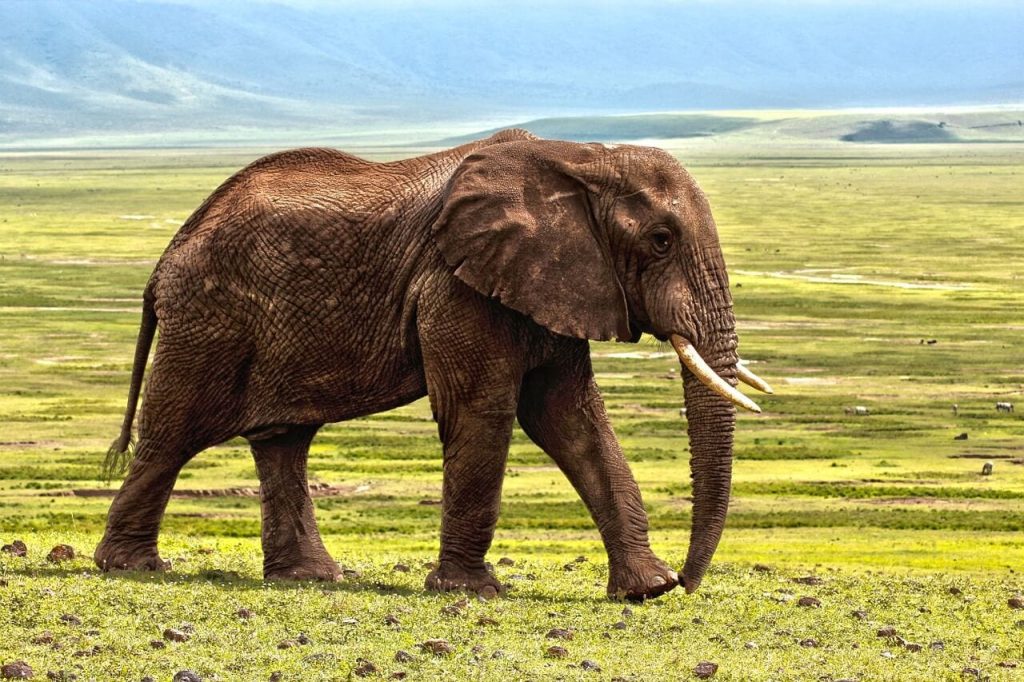
7. Plants
Victoria Falls boasts a rich and diverse array of plant life, with both native and exotic species lining its landscapes. Here are some prominent plant species found in this region:
7.1 Baobab trees
Baobab trees, with their massive trunks and distinctive silhouettes, are a common sight in the Victoria Falls area. These ancient trees are known for their ability to store water, making them resilient even in arid conditions. The sight of a baobab tree, standing tall against the African sky, is a symbol of strength and endurance.
7.2 Acacia trees
Acacia trees, with their spiky thorns and feathery leaves, thrive in the Victoria Falls region. These iconic trees play host to a wide variety of wildlife, providing shelter and nourishment for many species. Their canopy of shade offers respite from the African sun, creating a microcosm of life in the savannah.
7.3 Zambezi teak
Zambezi teak, also known as Rhodesian teak, is a prominent hardwood tree found in the forests near Victoria Falls. These majestic trees are known for their durability and rich reddish-brown wood. Zambezi teak forests provide essential habitat for a variety of plant and animal species, contributing to the overall biodiversity of the region.
7.4 Mopane trees
Mopane trees, with their distinctive butterfly-shaped leaves, are commonly found in the Victoria Falls area. These trees are known for their ability to withstand harsh environmental conditions, making them a dominant species in some regions. The sight of mopane trees, especially during the fiery colors of sunset, adds an element of beauty to the African landscape.
7.5 Waterberry trees
Waterberry trees, also known as Syzygium guineense, are native to the Victoria Falls area. These medium-sized trees are often found near water sources, providing important shade and habitat for wildlife. The sweet berries produced by waterberry trees are sought after by both birds and mammals, contributing to their ecological importance.
7.6 Ilala palms
Ilala palms, with their graceful fronds and edible fruits, are commonly found in the Victoria Falls region. These palms play an essential role in local communities, providing materials for weaving and construction. The sight of an ilala palm swaying gently in the breeze evokes a sense of tranquility and the timeless beauty of Africa.
7.7 Sausage trees
Sausage trees, aptly named for their long, sausage-shaped fruits, are a unique plant species found in Victoria Falls. These trees provide important forage for various animal species, including elephants and baboons. Witnessing the sight of the iconic fruit dangling from the branches is a hallmark of the African bushveld.
7.8 Fever trees
Fever trees, recognizable by their pale yellow bark, are a common sight in the Victoria Falls area. These trees are often found in wetland habitats and along riverbanks. The sight of a fever tree, with its distinct aura of serenity, adds a touch of elegance to the already beautiful landscapes of Victoria Falls.
7.9 Giant fig trees
Giant fig trees, with their expansive canopies and buttress roots, are a testament to the majesty of nature. These ancient trees provide important shelter and food sources for a wide variety of wildlife. Observing the towering presence of a giant fig tree serves as a reminder of the interconnectedness and interdependence of all species within an ecosystem.
7.10 Devil’s claw
Devil’s claw, a unique plant species found in the Victoria Falls region, is known for its distinctive claw-shaped fruits. These fruits have traditional medicinal uses and are sought after for their potential health benefits. Encountering a Devil’s claw plant showcases the countless wonders that the natural world has to offer.
8. Aquatic Life
Water bodies near Victoria Falls support a thriving ecosystem of aquatic plants and animals. Here are some notable examples of the aquatic life found in this region:
8.1 Water lilies
Water lilies, with their floating leaves and vibrant flowers, adorn the waterways near Victoria Falls. These plants not only add to the visual appeal of the landscape but also play a vital role in maintaining water quality by absorbing excess nutrients. Observing the serene beauty of water lilies floating gently atop still waters is a truly calming experience.
8.2 Lotus flowers
Lotus flowers, with their intricate beauty and cultural significance, can be found in the wetlands near Victoria Falls. These flowers symbolize purity and spiritual growth in many cultures around the world. Witnessing a lotus flower in full bloom, rising gracefully above the water’s surface, is a testament to nature’s ability to create breathtaking beauty.
8.3 Water hyacinths
Water hyacinths, although considered invasive in some regions, are a common sight in the water bodies near Victoria Falls. These floating plants form dense mats on the water’s surface, providing habitat for various aquatic species. The vibrant purple flowers of the water hyacinth add a splash of color to the otherwise green aquatic landscape.
8.4 Aquatic grasses
Aquatic grasses, such as papyrus and reedmace, are important components of the wetland ecosystems near Victoria Falls. These grasses provide shelter, nesting sites, and food sources for various birds, fish, and other aquatic organisms. The rhythmic sway of aquatic grasses along the water’s edge adds a sense of tranquility to the vibrant mosaic of aquatic life.
8.5 Hippo grass
Hippo grass, also known as vetiver grass, can be found near water sources in the Victoria Falls region. This grass is known for its strong anchoring abilities, preventing soil erosion in riparian areas. Hippo grass also provides valuable forage for a variety of grazing wildlife species, contributing to the overall health and balance of the ecosystem.
8.6 Papyrus reeds
Papyrus reeds, with their tall, slender stalks and feathery plumes, dominate the wetlands near Victoria Falls. These remarkable plants play host to numerous bird species, provide refuge for small mammals, and serve as a valuable resource for local communities. Witnessing the rustling of papyrus reeds in the wind paints a picture of the ever-changing dynamics of the aquatic world.
8.7 Water ferns
Water ferns, with their delicate fronds and intricate patterns, can be found in the water bodies near Victoria Falls. These ferns play a vital role in oxygenating the water and providing shelter for various aquatic organisms. The sight of water ferns waving gently below the water’s surface adds an element of grace and vitality to the aquatic landscape.
8.8 Water lettuce
Water lettuce, with its floating rosettes of pale green leaves, thrives in the calm waters near Victoria Falls. These plants provide habitat for small aquatic organisms and help maintain water quality by absorbing excess nutrients. The presence of water lettuce on the water’s surface adds a touch of whimsy and serenity to the aquatic environment.
8.9 Water shield
Water shield, also known as Brasenia schreberi, is an aquatic plant species found in the water bodies surrounding Victoria Falls. With its glossy, circular leaves and delicate purple flowers, water shield adds visual interest to the otherwise serene aquatic landscape. These plants create essential habitat for various aquatic insects, fish, and other organisms.
8.10 Duckweed
Duckweed, a floating aquatic plant with small green leaves, can be found in the water bodies near Victoria Falls. These plants provide important forage for waterfowl and other aquatic organisms. The sight of a tranquil pond covered in a carpet of vibrant green duckweed invites reflection and contemplation, offering a respite from the hustle and bustle of daily life.
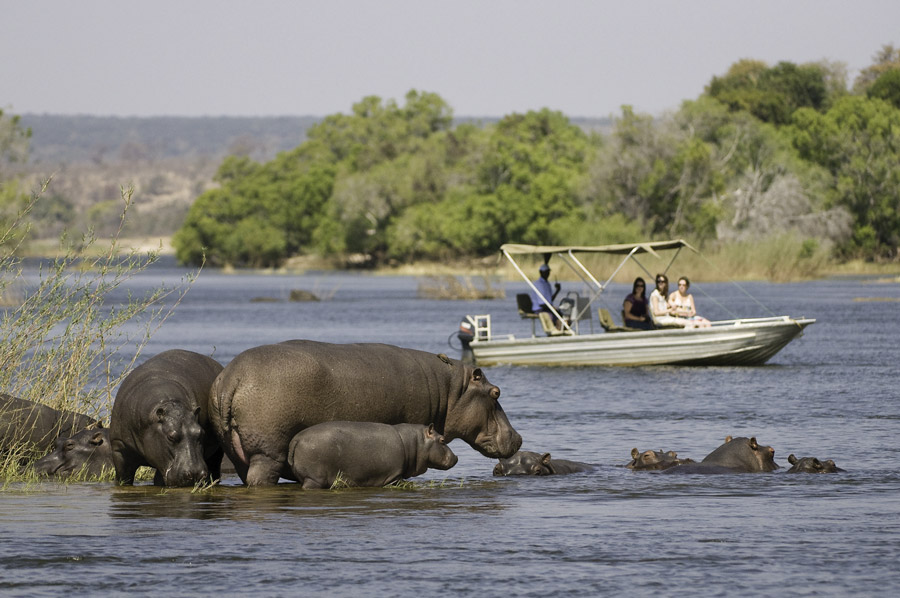
9. The Big Five
The Big Five, a term originally coined by hunters referring to the most challenging animals to hunt, now represents an iconic collection of African animals that draw tourists and wildlife enthusiasts to Victoria Falls. Here are the members of the Big Five that can be found in this region:
9.1 African elephant
The African elephant, the largest land mammal, is a key member of the Big Five. Victoria Falls provides a habitat for a sizeable elephant population, allowing visitors to witness these magnificent creatures up close. Whether observing their social interactions, marveling at their sheer size, or witnessing their bathing rituals, encountering African elephants in their natural habitat is a humbling experience.
9.2 African lion
The African lion, often referred to as the king of the jungle, is another prominent member of the Big Five found in Victoria Falls. These majestic big cats can often be observed lounging in the grasslands or embarking on a hunt with their fellow pride members. Witnessing the raw power and grace of an African lion evokes both respect and admiration for these apex predators.
9.3 African buffalo
The African buffalo, also known as the Cape buffalo, is a formidable member of the Big Five found in Victoria Falls. These powerful herbivores travel in large herds, displaying a unified front against potential threats. Observing the sheer numbers and coordinated movements of African buffalos is a testament to the strength of unity in the animal kingdom.
9.4 African leopard
The African leopard, an elusive and solitary big cat, can be found in the wilderness surrounding Victoria Falls. Known for their stealth and agility, leopards are highly adapted to their environments. Although encounters with these elusive predators are rare, spotting a leopard moving stealthily through the undergrowth is an unforgettable experience that showcases the beauty and mystery of African wildlife.
9.5 White rhinoceros
The white rhinoceros, one of Africa’s most iconic yet critically endangered species, completes the Big Five in Victoria Falls. These massive herbivores can be encountered in the surrounding wilderness, foraging on grasslands. Unfortunately, white rhinoceros populations have suffered greatly due to poaching activities. Witnessing these incredible animals serves as a poignant reminder of the urgent need for conservation efforts.
10. Conservation Efforts
Victoria Falls and its surrounding ecosystems are not only a natural wonder but also a place of immense ecological importance. Various conservation efforts are being implemented to protect the diverse wildlife and fragile habitats found in this region. Here are some key conservation initiatives:
10.1 Protection of wildlife habitats
Preserving and protecting the habitats of Victoria Falls’ wildlife is paramount to ensuring the long-term survival of the diverse species found in the region. Efforts are being made to establish protected areas, wildlife corridors, and national parks, allowing wildlife to thrive in their natural environments. These measures promote ecosystem health and contribute to the preservation of biodiversity.
10.2 Anti-poaching initiatives
Poaching poses a significant threat to Victoria Falls’ wildlife, particularly the African elephant and rhinoceros populations. Anti-poaching initiatives aim to combat illegal hunting activities by increasing law enforcement, establishing ranger patrols, and implementing technological advancements such as drone surveillance. These efforts help deter poachers and protect endangered species.
10.3 Community involvement
Involving local communities in wildlife conservation is crucial for the sustainable management of natural resources in the Victoria Falls region. Engaging communities in conservation projects, providing education and training, and promoting sustainable livelihoods help foster a sense of ownership and responsibility toward wildlife and their habitats.
10.4 Sustainable tourism practices
Tourism plays a significant role in the Victoria Falls region, providing economic opportunities while raising awareness about the importance of conservation. Sustainable tourism practices aim to minimize the negative impact on the environment, promote responsible visitor behavior, and support wildlife conservation through revenue generated from tourism activities. When visiting Victoria Falls, choosing responsible tour operators and following ethical guidelines can contribute to the long-term preservation of the region’s wildlife.
10.5 Education and awareness programs
Educating both locals and visitors about the importance of wildlife conservation is crucial for fostering a culture of environmental stewardship in the Victoria Falls region. Awareness programs, educational initiatives, and interpretive materials help increase public knowledge about the diverse ecosystems and the need for their protection. By cultivating a deeper understanding and appreciation for wildlife, individuals can become advocates for conservation and contribute to the preservation of Victoria Falls’ natural heritage.
In conclusion, the wildlife of Victoria Falls is a true testament to the incredible diversity and beauty of nature. From majestic mammals such as elephants and lions to fascinating reptiles, insects, and amphibians, Victoria Falls offers a haven for a wide range of species. The lush plant life, both on land and in water, further enhances the captivating landscapes of this region. However, with this beauty comes a responsibility to protect and conserve these natural wonders. Through conservation efforts, such as habitat protection, anti-poaching initiatives, community involvement, sustainable tourism practices, and education, we can ensure that Victoria Falls remains a sanctuary for wildlife for generations to come. So, whether you’re exploring the grasslands, peering into the depths of a river, or admiring the intricate patterns of a butterfly’s wings, remember to appreciate and respect the incredible wildlife that calls Victoria Falls home.

